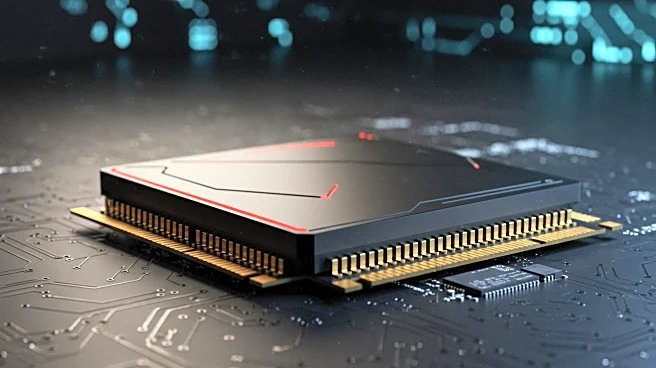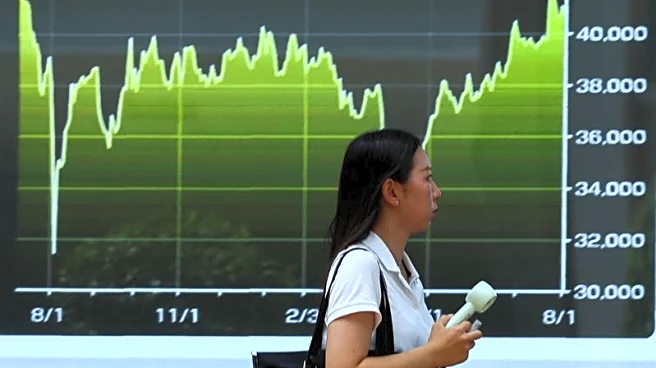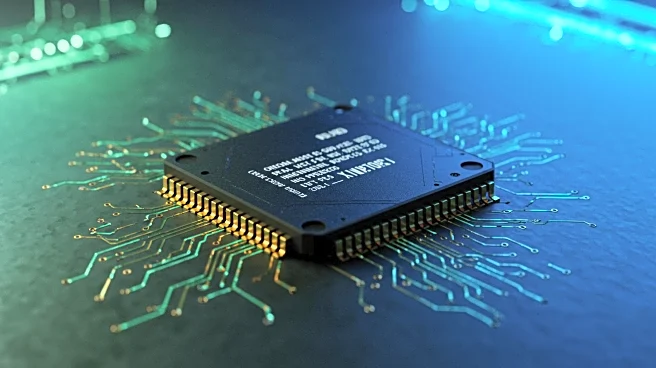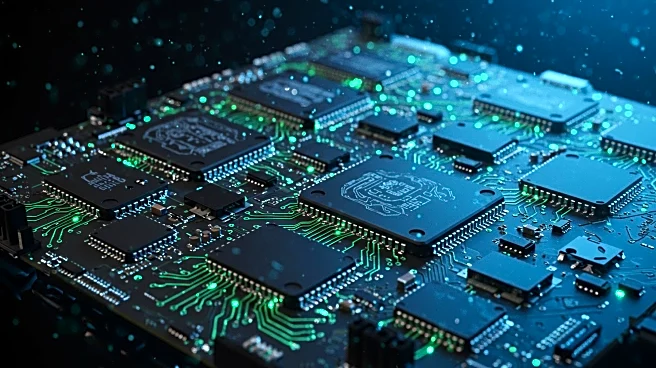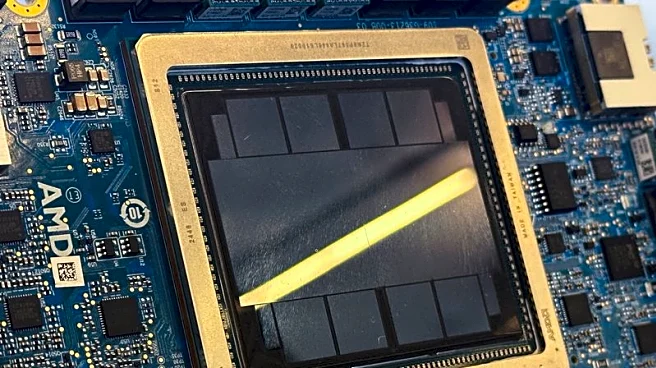What's Happening?
Nvidia's next-generation Rubin GPU is facing production delays due to a redesign at Taiwan Semiconductor Manufacturing Company (TSMC). The revised version is expected to be finalized by late September or October, potentially reducing production volumes in 2026. Despite this setback, Rubin is set to replace Nvidia's current Blackwell line, which has shown impressive growth. TSMC, the primary manufacturer for Nvidia's GPUs, is consolidating its 8-inch wafer production capacity to improve efficiency, while phasing out its 6-inch wafer manufacturing business over the next two years. This strategic shift aims to align with market conditions and long-term business objectives. TSMC's strong performance in the second quarter of 2025, marked by a 22.5% quarter-over-quarter increase in net revenue, highlights its resilience despite potential U.S. tariffs.
Why It's Important?
The production delay of Nvidia's Rubin GPU could impact the company's revenue projections for 2026, affecting its growth in the AI and high-performance computing markets. Nvidia's stock has shown resilience, gaining 23% year-to-date despite potential U.S. tariffs. The demand for AI chips consistently outpaces supply, positioning TSMC well despite trade tensions. The delay may also affect Nvidia's competitive edge against AMD, as both companies vie for dominance in the AI sector. The redesign and subsequent production delays could influence market dynamics, potentially benefiting competitors who can capitalize on Nvidia's temporary setback.
What's Next?
Nvidia and TSMC are expected to finalize the redesign of the Rubin GPU by late September or October, which will determine the production volumes for 2026. Stakeholders will be closely monitoring the situation, as any further delays could impact Nvidia's market position and revenue projections. The strategic shift by TSMC to consolidate its wafer production capacity may also influence future manufacturing efficiencies and customer transitions. Industry analysts will be watching for any changes in Nvidia's stock performance and market strategies in response to these developments.
Beyond the Headlines
The redesign and production delays of Nvidia's Rubin GPU highlight the complexities of semiconductor manufacturing and the strategic decisions companies must make to align with market conditions. The situation underscores the importance of supply chain management and the potential impact of geopolitical factors, such as U.S. tariffs, on global technology companies. The ongoing competition between Nvidia and AMD in the AI sector may lead to further innovations and shifts in market leadership.


